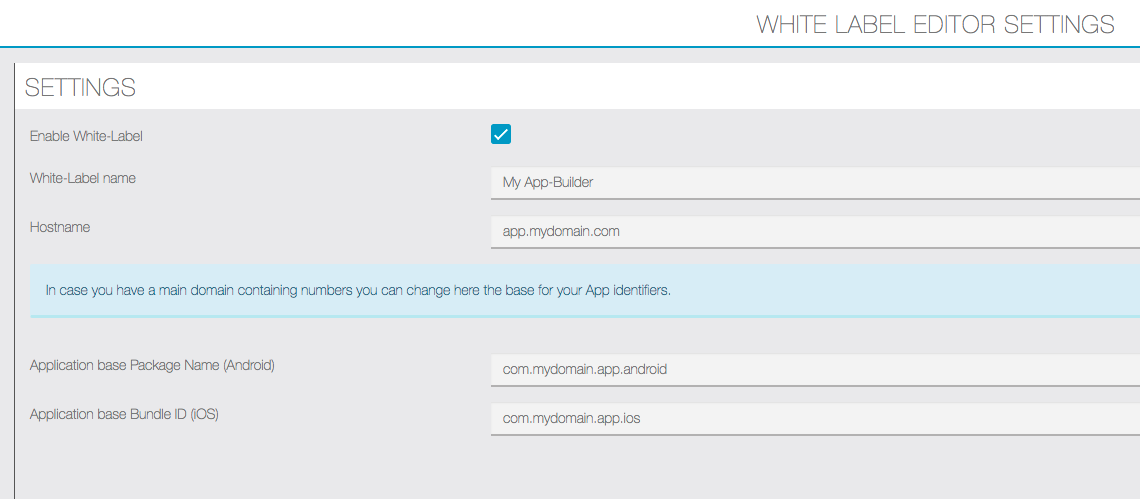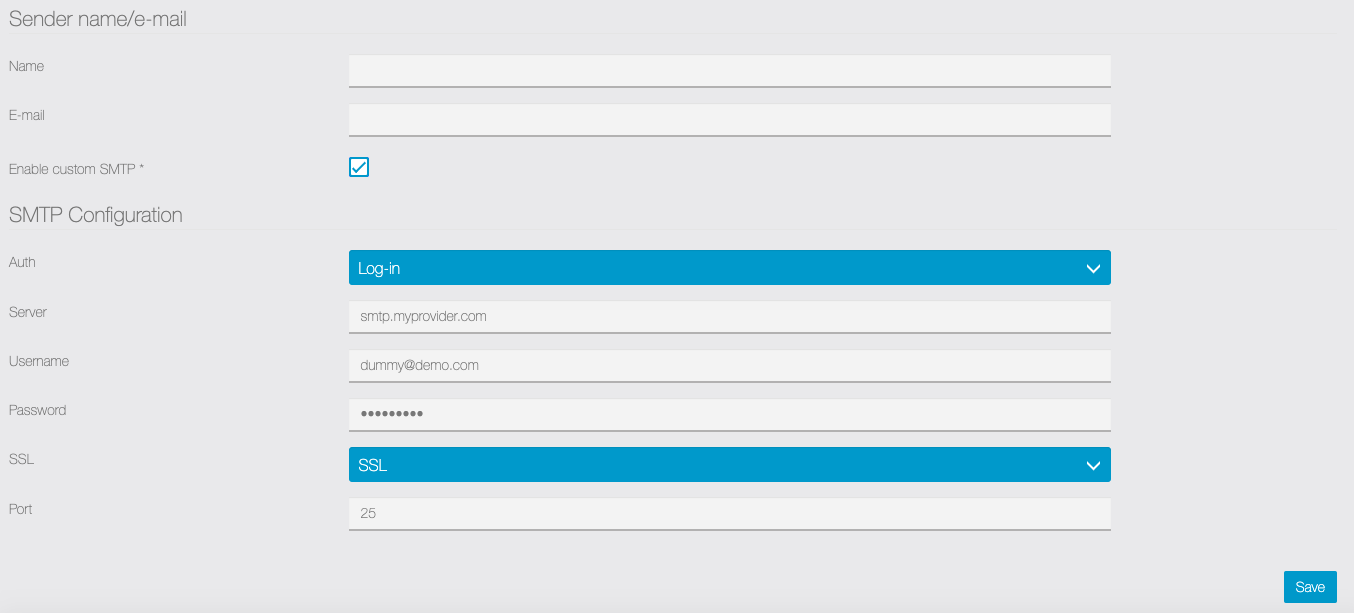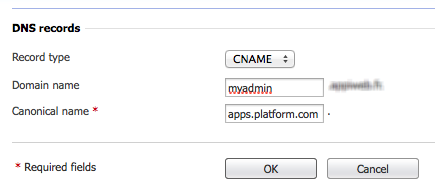First of all, you must set up your server to allow white labels . Once done, your clients need to have a domain name. If they do not have one yet, they can purchase one, for example at ovh.com. A .com name costs some € 5 / year. They are not required to purchase hosting service with their domain name.
Then, they must have access to the DNS zones from the domain name management interface. DNS means Domain Name System. Don’t worry, this is not too technical. They will usually find the DNS zones in the Domain section of their domain admin panel. When they find that section, they have to create a type CNAME or CNAME record. In this record they will have to enter the following info:
domain name: their subdomain
address: the address of your editor (for example, app.yourdomain.com, if your platform is installed on a subdomain, or yourdomain.com if your platform is installed on a main domain)
Here is an example of how it could look like (it depends on the domain admin panel):
Your clients can either choose to use their domain name exclusively as a white-label interface, or choose a subdomain (this is an example of the format: subdomain.mydomain.com). They have to enter the name of their domain or subdomain. If they have the option, they should set the TTL to the minimum value. If they don’t have this option,they should not worry. It just helps their modifications to be taken into account more quickly.
To finish, they must connect to their account on your platform. Then in White Label > Settings they have to enter their domain name in the “Hostname” field. If they are using the domain for their white label admin panel, they must enter their domain name; if they are using a subdomain, they have to enter that subdomain. If the CNAME has not been configured correctly, they will receive an error message.

They must also enter a name for their white label and the Application base Package Name (Android) and Application base Bundle ID (iOS).
Then they must not forget to customize their admin panel by clicking on this icon on the right of the general menu at the top:
![]()
Please note also that the customisations you make with this process will only appear at their white label editor address, and not on your platform, that’s why you may notice that the changes disappear when you close the customisation panel. These changes are saved to be displayed at the address of their white label editor.
If they were able to set the TTL to the minimum value, they should be able to access their white-label interface immediately by typing the name of their domain or subdomain into their web browser. If not, they should be able to access it within 24h.
Then, once they have built the application of their first client, they should create an access to the application for him and give him the link to their white label panel.
Thanks to this, his client will be able to manage his app on your client’s admin without knowing he is using your platform.
Your client (the white-label admin) can also configure his own SMTP provider, so that the emails sent by his apps are sent with the email address he wants and not the email address set in your Siberian:

Note: if the app does not belong to the admin who has set the custom SMTP (the white-label admin), the SMTP will not be used. In this case you can change the app owner in the application page in the backoffice so that he is the white-label admin.
You will find how to change the owner of an application here.


